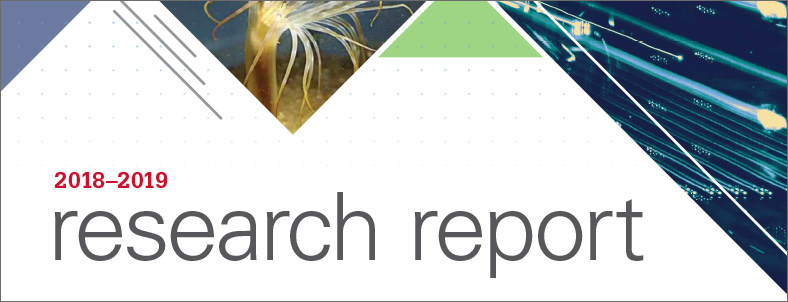The Ohio State University’s Marymegan Daly and her research partners probed the depths of Monterey Bay to collect samples of the tube-dwelling sea anemone, samples that are allowing the scientists to generate and analyze the transcriptomes of these ancient animals and reveal the diversity of toxins within their venom.
“Venom mediates interactions between sea anemones and the rest of their communities: it helps them to defend against predators, acquire prey and support symbiotic partners,” said Daly, professor of evolution ecology and organismal biology. “Very little is known about the diversity of genes responsible for venom in sea anemones. Understanding the evolution of venom will impact our ability to predict and interpret the function of sea anemone venom in a variety of ecological and evolutionary contexts.”
Daly and her colleagues attempted to use standard gene-sequencing software to generate the genomic information for the toxin study. However, many of them could not distinguish between sequencing errors and unique genetic variations. They finally found that the Geneious bioinformatics software platform could accurately make most of those differentiations. With the software in place, they knew that desktop computers and even the small local cluster were inadequate for the degree of computation that would be required. They turned their attention to the Ohio Supercomputer Center (OSC).
“We use our local cluster as a kind of intermediate sandbox," Daly said. “And then once we're ready to scale up and do comprehensive analysis then we use OSC’s supercomputers. We feel like we've done our due diligence that way.”
Early on, Daly’s group recognized that in the process of seeking the venom RNA code, they had at the same time generated an entire RNS sequence dataset. “This was like filtering all of the water in a swimming pool for just one leaf,” Daly explained. “What do you do with the rest of the water?”
They determined that the RNA of the tube anemone does what few other species’ mitochondrial genomes have been shown to do. Defying the classic doughnut shape it “should” be in, the anemone RNA instead is arranged in several fragmented pieces. The biology of this simple relative of coral and the jellyfish turned out to be more complex than expected, possessing the largest mitochondrial genome on record—81,000 base pairs, or pieces of genetic information, compared to 17,000 base pairs found in human mitochondrial DNA.
______________
PROJECT LEAD // Marymegan Daly, Ph.D., The Ohio State University
RESEARCH TITLE // Using geneious to reveal venom gene copies hidden in sea anemone de novo transcriptomes
FUNDING SOURCE // National Science Foundation
WEBSITE // eeob.osu.edu/people/daly.66

